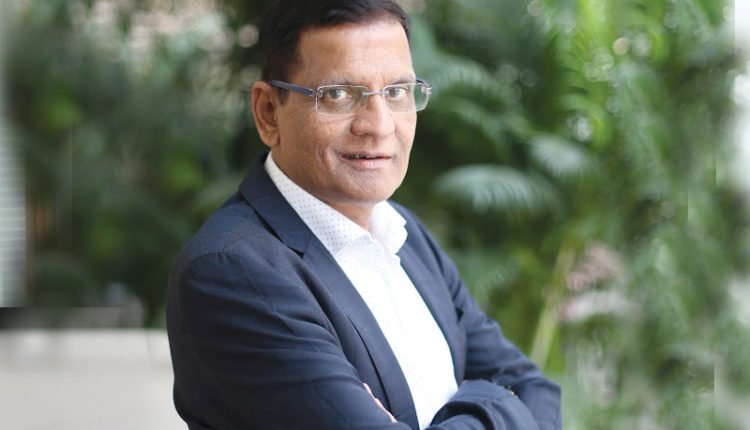Every now and then, we come across newspaper headlines about fire accidents that shake the entire nation. If we look at the statistics over 3 lakh people have died of fire in India between 2001 and 2014. This essentially implies that an average of 59 Indians are killed every day due to fire. These statistics are definitely alarming. In fact, fire accidents take away more lives than any natural calamity or disasters.
To raise awareness and make people aware about the gravity of the issue, the Indian Electrical and Electronics Manufacturers’ Association (IEEMA) recently organized an Electrical Fire Safety Conclave at ITC Grand Maratha in Mumbai, which saw participation of nearly 400 experts and professionals from the safety industry. On the sidelines of the event, ISR spoke to Shreegopal Kabra, President, IEEMA, who tells us in-depth about the chief causes of fire and the crucial steps needed to be taken to prevent such accidents.
Kabra asserts that in Indian scenario majority of the fire accidents are caused by electrical short circuits. “There are three prime reasons that result in electrical short circuits, namely poor quality wires and cables, errors and mistakes by electricians or contractors and overuse. Poor quality wires and cables however are the biggest culprit—around 80% of electrical short circuits occur due to substandard cables,” he updates. Most of the deaths during a fire are caused by suffocation and low visibility due to toxic smoke emanating from burning wire casings.
Strong requirement for monitoring cable quality
Despite so many incidents of fire claiming several lives, the efforts dedicated to curb future outbreaks have been abysmally dismal. Even today, there are major flaws in wires and cables being used across the nation. “Globally, the norm is to use Low Smoke Zero Halogen Wiring, India is the only country where the use of FRLS wires is permissible. These wires have aluminum, which poses serious potential fire hazards. FRLS are basically slightly modified polyvinyl chloride (PVC) wires, which are prone to emanating toxic fumes when they come in contact with flame,” points out Kabra. He suggests that halogen free (LSOH) cables should be used to combat these dangers.
While the government is focusing strongly on the energy saving aspect in cables, there is little thrust in the area of cable quality. “The government needs to take immediate and strong actions to curb ‘electrical terrorism’ in the country. Similar to 5- Star products for energy saving, there should be a separate category indicating 5- Star products for electrical safety,” emphasizes Kabra.
Kabra asserts that the usage of better electrical products will add only nominally to the cost of construction. “Improving the choice of quality electrical products will lead to additional expense of Rs 25 per square feet, which is marginal as compared to its role in preventing fires. There should be no room for compromise with the quality of electrical products.”
Need to Tighten Rules on Fire Safety Regulations
In the last decade, construction activities in India have constantly been on the rise, especially significant number of high-rise buildings have come up across the nation. Given this, it becomes all the more necessary to focus on fire prevention and safety. “Because of its peculiar nature, fire in residential buildings in particular, high rise buildings become more complex and the salvaging operations become more difficult,” avers Kabra.
In the current scenario, there is a dire need for centre, states and provincial governments to jointly enforce more stringent fire safety regulations. “Stringent fire safety regulations are the need of the hour. Although the regulatory and statutory framework in terms of the Electricity Act, Electricity rules and the Central Electricity Authority Regulations have been framed, but implementation remains a challenge. Also, while the National Building Code 2016 has been finalized and devotes a sizeable portion on electrical safety of buildings, it has not been mandated across the country. There should be a law to enforce implementation of the National Building Code,” opines Kabra.
Kabra also suggests amendments in the Real Estate Regulatory Authority (RERA) laws. “It should be made mandatory for the project developer to offer a guarantee of at least 10 years, instead of current 5 years, for all electrical and plumbing equipment that are used in the project,” he says.
Kabra feels strongly that there is a need to raise knowledge about critical requirement for fire safety and prevention. In this regard, IEEMA is taking significant steps. Starting with the first conference in Mumbai, the association plans to do more such conclaves in the near future across the country to bring together and raise awareness amongst fire officers and state and central government officials.
Awareness is definitely a critical step in the direction of preventing loss of lives and property from fire. Moreover, it requires serious efforts from the entire value chain. “The government, builders and end-users all need to come together and play their part to prevent electrical accidents,” sums up Kabra.

